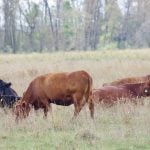
Tag Archives Insecticides

France says pesticide ban will not hit grain exports
Fumigant can't be in 'direct contact' with grains

Neonics still best flea beetle option
There’s mounting evidence the European ban has significant unintended consequences, entomologist says

U.S. trade commission sues pesticide makers, alleging price scheme
Editor’s Take: Crop protection under fire

Year in review: Keep an eye out for these critters in 2020
Entomologist John Gavloski says these should be on your radar

Are wireworms’ days numbered?
Once you have wireworms, it’s hard to get rid of them, but that might be changing once BASF’s new seed treatment launches in 2021

Common sense needed in pesticide reviews: agri-food groups
The PMRA has been stacking review upon review in some cases, critics say

More debate yet to come on neonics
Health Canada has satisfied its concern with three neonicotinoid insecticides and pollinator risk, but a decision to protect aquatic insects may yet take those chemistries off the table

No new major neonic restrictions: Health Canada
Existing restrictions remain, but they won’t be expanded for the foreseeable future

How and why: What drove the proposed neonic ban?
There are a number of reasons a pesticide might come under review after registration


